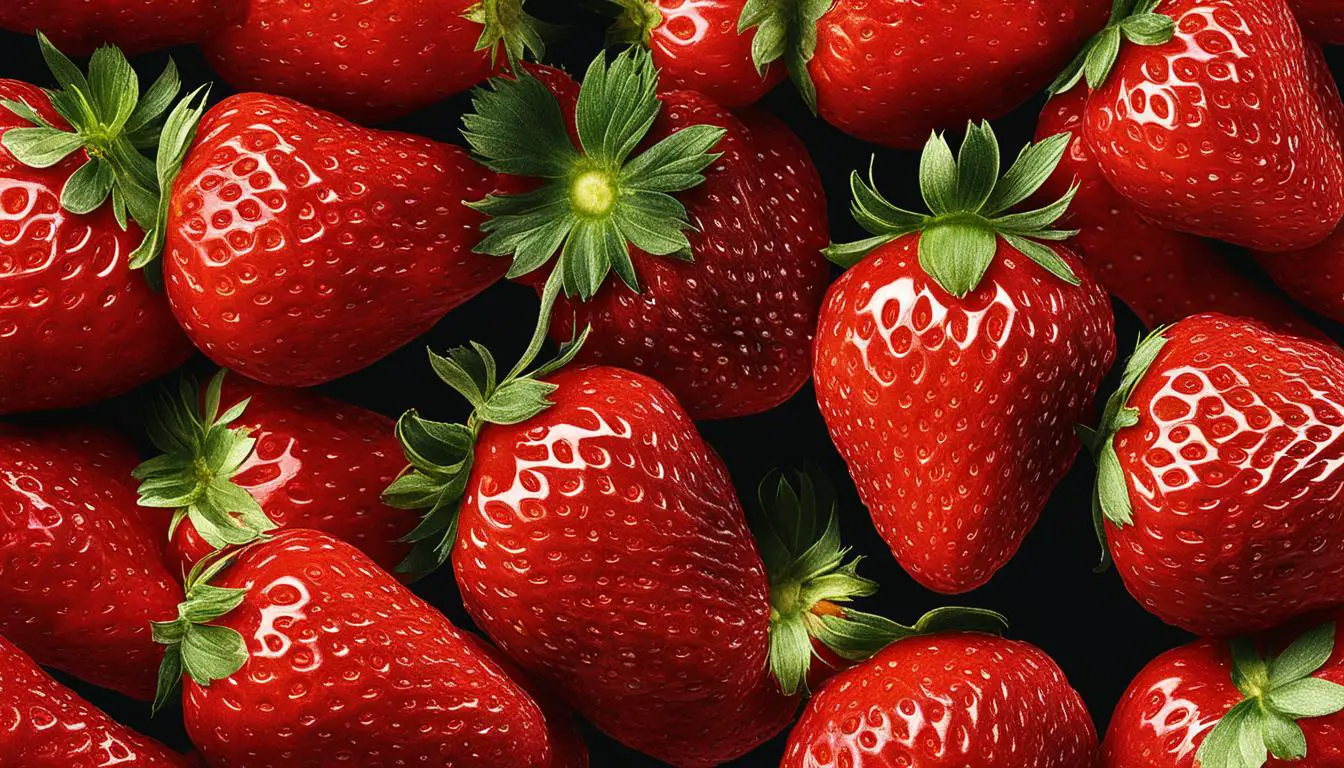Do you like emmental cheese? If so, this is the blog post for you! In this article, we'll discuss everything you need to know about emmental cheese.

Iremos falar sobre a sua história, como é feito e o que o torna único. Também partilharmos algumas receitas que poderá utilizar para apreciar o queijo emmental em toda a sua glória!
Índice
What is Emmental cheese?
O queijo Emmental da Suíça tem a sua origem no século XIII no vale do rio Emme, no cantão suíço ou região de Berna. É o queijo mais antigo da Suíça e é considerado como uma parte importante da história suíça.
O Emmenthal produzido nas creameries da região, beneficia da denominação de origem protegida (AOP) ou do estatuto de denominação de origem protegida (PDO).
Requer que o leite seja produzido a partir de leite de vaca fresco, cru (não pasteurizado), produzido exclusivamente em regiões de produção designadas e alimentado apenas com erva e feno.
Emmental (também conhecido como Emmental, Emmentaler, e Emmenthaler) é um queijo liso e semiduro feito a partir de leite de vaca.
Possui um corpo firme e denso e uma crosta dura e não comestível. Vai desde o liso e amanteigado até aos frutos secos, frutados, e com sabor cheio. O Emmenthal jovem ou clássico é envelhecido durante pelo menos quatro meses e é suave e frutado.

Why Emmental Cheese Has Holes
O queijo tem buracos devido à forma como é produzido. O queijo Emmental é um tipo de queijo suíço com buracos grandes, ou "eyes" Os olhos são formados por bolhas de gás que se formam durante o processo de criação do queijo.
As bolhas de gás são causadas por bactérias que comem a lactose no leite e produzem dióxido de carbono. O dióxido de carbono fica retido na curva.
Os buracos também ajudam a identificar o genuíno queijo Emmental a partir de imitações, uma vez que a lei suíça exige que todos os queijos Emmental tenham furos.
As bactérias shermani propionibacter são submersas numa cuba de líquido, onde consomem ácido láctico e produzem bolhas de dióxido de carbono.
Os buracos na crosta do queijo são causados por bolhas de ar presas na coalhada durante a maturação. O tamanho das aberturas é determinado pela alteração da temperatura a que trazem o leite, a acidez do leite, ou quanto tempo um queijeiro envelhece as suas formas.
What does emmental cheese taste like
Emmentaler's distinctive flavor is due in part to our fellow shermani propionibacter. Quando a bactéria consome ácido láctico no queijo jovem, também produz outros produtos secundários, como o dióxido de carbono.
O CO2 é libertado quando o ácido láctico é decomposto, e o ácido láctico muda para ácido propiónico, o que dá ao Emmentaler o seu odor e sabor distintos e pungentes.
O sabor do queijo Emmentaler varia muito, dependendo do nível de actividade do Propionibacter shermani. O sabor e o tamanho dos olhos estão ligados. Os buracos do queijo são maiores, o que resulta num sabor mais intenso e desenvolvido.
Quanto mais tempo um queijo envelhece, maiores são as bactérias que aumentam o seu sabor. Isto pode explicar porque é que o queijo suíço de fabrico americano tem sabores mais suaves e cremosos. As versões europeias tendem a ser mais redondas, mais ricas, e com mais sabor a nozes.
Se preferir o sabor delicado e textura cremosa, então sugiro que verifique o cheese mozzarella que é ideal para uma diversidade de receitas.

Emmental cheese: health benefits
Não sei você tem conhecimento, mas os queijos suíços, oferecem diversos benefícios para a saúde, como é o caso do queijo Emmental, que passo a enumerar:
Saúde Óssea
O cálcio e as proteínas do queijo suíço contribuem para ossos mais fortes e mais saudáveis. A proteína tem estado ligada ao desenvolvimento dos ossos e à sua formação.
Além disso, a ingestão de cálcio é necessária para que os nossos ossos sejam fortes e saudáveis, assim como um bom fluxo sanguíneo e músculos.Gestão do peso
Helps in increasing muscle mass
O queijo suíço é rico em proteínas. A proteína é essencial para a nutrição humana, mas também tem vantagens para o corpo, tais como o aumento da massa muscular e a contribuição para a nossa força.
O aumento da ingestão de proteínas tem demonstrado contribuir directamente para o desenvolvimento da força no treino de resistência.
Reduz a Pressão Arterial
É necessário mais estudos para associar o queijo suíço a uma pressão sanguínea mais baixa. Apesar disso, uma investigação descobriu que o queijo inclui doses de dois peptídeos anti-hipertensivos (componentes proteicos encontrados no leite, ovos, e carne) com efeitos de diminuição da pressão sanguínea.
Increases Metabolism
Muitas proteínas são também benéficas para impulsionar o seu metabolismo e reduzir os desejos alimentares, o que o ajuda a evitar comer em excesso e ganhar peso.
Os alimentos que contêm proteínas elevadas, como o queijo suíço, demonstraram reduzir o número de calorias queimadas e dar-lhe mais energia, especialmente quando comparados com dietas ricas em hidratos de carbono.
How emmental cheese is made
Numa grande chaleira ou cuba de cobre, o leite cru de vaca é suavemente aquecido. Adiciona-se soro natural e coalho para desencadear a coagulação e a formação de coalhada. A coalhada é retirada do molde e colocada em moldes, enquanto o soro de leite é drenado.
Os moldes são então em salmoura e envelhecidos. Uma mistura de culturas proprietárias, incluindo bactérias propiónicas, são adicionadas durante o processo de maturação. As bactérias propiónicas alimentam-se do ácido lácteo e libertam bolhas de dióxido de carbono durante o processo de envelhecimento.
As bolhas ficam presas dentro da casca à medida que esta se molda e desenvolve buracos. As temperaturas da sala serão mantidas quentes para ajudar os buracos reconhecidos do queijo a formarem-se durante a sua maturação.
Após dois meses, o queijo assumirá as características do queijo Emmenthal. O queijo é produzido em formas grandes com cerca de 1,5 m de largura e aproximadamente 200 quilos.
Emmenthal sem a designação AOP também é produzido em França e na Alemanha, bem como nos Estados Unidos, onde está amplamente disponível tanto como Emmenthal como como queijo suíço e tem um preço moderado.
O queijo não-AOP é mais suave e carece das características de sabor do verdadeiro Emmenthal suíço, uma vez que o leite e as culturas utilizadas não são as mesmas que as utilizadas nas áreas designadas da produção na Suíça.
Types of Emmental Cheese in Brazil
No Brasil, estão disponíveis queijos Emental mais pequenos com cilindros com peso entre 12 e 25 kg. Estão também disponíveis em porções na maioria dos casos.
O queijo Emmental é produzido no Brasil por pasteurização do leite de vaca e tem um sabor suave e doce. O método e os diferentes ingredientes crus do original suíço produzem um sabor bastante diferenciado.
Protected Designation of Origin (PDO)
Apesar de ser um queijo suíço típico, o Emmental também pode ser produzido em França e na Alemanha.
Por este motivo, os queijos Emmental ou Emmentaler não têm a denominação de origem protegida na Europa, tal como outros queijos Gorgonzola ou Brie.
No entanto existem quatro variedades de queijos que tem o reconhecimento de qualidade na origem, que são:
- Emmentaler Switzerland – referem-se aos queijos fabricados em regiões específicas na Suíça;
- Allgäuer Emmentaler – referem-se aos queijos fabricados na alemanha, na região da Bavária;
- Emmental of Savoie – Referem-se aos queijos fabricados em França, na zona de Savoie;
- Emmental Français Est-Central – Referem-se aos queijos fabricados em França, na região de Franche-Comté;
What does emmental cheese go with?
O queijo Emmental é um queijo que se derrete facilmente. É óptimo para pratos ralados ou com queijo derretido, tais como molhos, quiches, e soufflés.
Quer adicionar um toque gourmet à sua mozzarella quente? Basta substituir a mozzarella por queijo Emmental e mostarda Dijon para uma grande actualização. O X-burger também beneficia da adição de queijo Emmental.
O famoso Croque Monsieur francês (presunto, queijo, e molho bechamel num croissant) pode ser feito com emmental na linha da sanduíche. Veja como prepará-lo no vídeo abaixo.
Misturar pedaços de emmental com folhas, frutas e nozes para acrescentar interesse a uma salada.
O soufflé de queijo Emmental e alho poró é fantástico. A propósito, uma omelete básica com Emmental é bastante boa, e não falemos sequer de quiches, que também podem ser preparadas com este queijo suíço.
O queijo é também fantástico com cogumelos, espargos, couve, batatas e outras variedades de massa. Basta ralar o queijo e cozinhá-lo num prato para o fazer gratinado.
O queijo Emmental também pode ser consumido ao natural, isto é, pode ser comido em cubinhos. Poderá ser acompanhado com frutas , salames ou com presuntos gourmet.
O queijo é melhor quando servido à temperatura ambiente. Portanto, lembre-se de o retirar do frigorífico 20-30 minutos antes de servir (dependendo da temperatura ambiente).

Differences between Emmental and Gruyere cheese
Emmental e Gruyère são dois dos mais conhecidos queijos suíços, sendo ambos altamente apreciados em fondue pelo seu sabor e capacidade de fusão. Apesar da sua popularidade generalizada, muitos indivíduos parecem ter dificuldade em distinguir os dois tipos de queijo.
O queijo Emmental é mais suave no sabor do que o Gruyère, mas pode ser utilizado como substituto na maioria dos pratos.
Na cultura popular, a Emmental tem grandes buracos, enquanto a Gruyère tem buracos mais pequenos. Além disso, o Gruyère é mais gordo e mais salgado do que o Emmental, tornando-o ideal para fondue mais cremoso.
Vamos analisar as diferenças entre Gruyére e Emmental com mais detalhe.
Visual aspect
Uma das principais diferenças entre estes tipos de queijo é o seu aspecto visual. Embora ambos os produtos sejam de cor amarelo pálido, o queijo Emmental é caracterizado por enormes buracos criados por bolsas de gás durante um processo de fermentação que dura de três a seis meses.
Por outro lado, o Gruyére tem menos buracos, que são também mais pequenos, mas separados de forma uniforme do que no caso do Emmental. Não se deve surpreender mesmo que os buracos encolham durante o processo de envelhecimento.
It is a great snack or breakfast option that is packed with nutrients and will help satisfy your hunger. Plus, it’s easy to make and can be customized to your liking. Gruyère vem em rodas mais pequenas que o Emmental, pesando entre 30 e 40 quilos, e tem um sabor mais pronunciado que o seu homólogo maior, graças ao maior tempo de envelhecimento.
Por outro lado, o Emmental pode ser armazenado até seis semanas no frigorífico e congelado até três meses com pouca alteração no sabor ou textura. Se for bem embalado e refrigerado, o Gruyere também pode durar várias semanas.
Sabor e Fusão
Ambos os tipos de queijo são bastante semelhantes no que diz respeito à origem, utilização e propriedades de armazenamento. Mas, quando se trata de sabor, o Gruyère é um pouco mais gordo e mais salgado do que o Emmental, e sem dúvida um pouco mais saboroso.
Ambos os tipos de queijo vêm da Suíça, embora em duas regiões diferentes, e são particularmente adequados para fondues e pratos de queijo devido às suas propriedades de fusão distintas. Mas, tradicionalmente, o Gruyère é utilizado para o fondue mais cremoso.

emmental cheese recipes
Existem milhares de receitas onde é utilizado o queijo Emmental, assim eu decidi compartilhar com você 3 receitas que eu adoro e onde é possível acompanhar passo a passo em vídeo.
Emmental Cheese Quiche
O termo “quiche” deriva do alemão “küchen,” que significa “tarte”
A quiche tem muitas variações e pode ser servido com uma variedade de recheios, tais como queijo, presunto, legumes, etc. A flexibilidade e diversidade deste prato é demonstrada pelas numerosas receitas e métodos de preparação.
Confira a seguir uma deliciosa receita de quiche de queijo emmental, que é muito simples e rápida de preparar. Além disso é pode ser utilizada no almoço ou jantar, também pode ser utilizada como entrada ou até mesmo em lanches com a família ou com amigos.
Emmental cheese fondue
O fondue é uma refeição que oferece a você e a seus amigos e familiares um experiência imperdível! Pois é uma refeição que é constantemente compartilhada entre todos.
Conhece o fondue de queijo que só se vê nos restaurantes mais elegantes da cidade ou na televisão e que sempre quis fazer em casa?
Quando aprender a preparar esta receita caseira de fondue de queijo, o seu sonho tornar-se-á realidade.
Emmental cheese soufflé
O suflê é um prato francês que existe há séculos e é feito com ingredientes muito simples: gemas de ovo, manteiga, farinha e leite.
A beleza do suflê reside na sua simplicidade e versatilidade. Pode ser doce ou salgado, grande ou pequeno, cozido ou simples.
Este soufflé de queijo emmental, a receita é saborosa, simples e rápida de fazer. É perfeita para um prato principal ou como acompanhamento de uma refeição mais elaborada.
Emmental cheese frequently asked questions
É comum termos bastantes dúvidas sobre o queijo emmental, e como tal queremos esclarecer em relação às questões mais comuns:
Queijo emmental preço no Brasil ?
1kg de queijo emmental de produção brasileira deverá rondar os R$110, no entanto também é possível comprar o queijo cortado em fatias, normalmente entre 120g a 150g que custam em torno de R$20
Does emmental cheese melt?
O queijo emmental derrete e por isso mesmo é muito utilizado em fondues de queijos, bem como em pratos cremosos, como é o caso de pizzas, risottos, etc.
O queijo emmental é bom?
O queijo emmental é bastante bom, tem um sabor mais neutro, o que torna possível a sua utilização em várias receitas, tanto doces como salgadas. Além disso, o queijo emmental é também mais saudável do que outros queijos, porque contém menos gordura.
Emmental cheese goes with which wine?
O queijo emmental combina muito bem com um vinho Chardonnay, que é um vinho branco, mas também pode ser servido com um vinho espumante.
Does Emmental cheese have lactose?
Alguns queijos suíços duros, incluindo Le Gruyère e emmental, não contêm lactose, uma vez que esta se decompõe no processo de produção.
Does emmental cheese have fungus?
Não, o queijo emmental não tem lactose ou fungo. É uma opção de queijo saudável para aqueles que procuram um queijo com menor teor de gordura e calorias. O queijo emmental é feito de leite, sal, e coalho. É isso mesmo! Sem conservantes adicionados ou qualquer outra coisa . Pode sentir-se bem a comer queijo emmental.
Verônica Ribeiro, the creative mind behind “Cozinha da Vê”, is passionate about flavors and aromas and transforms her passion for cooking into irresistible recipes. With a unique ability to combine ingredients and a special touch of affection in each dish, she conquers hearts and palates, making cooking a truly delicious experience on her blog.





